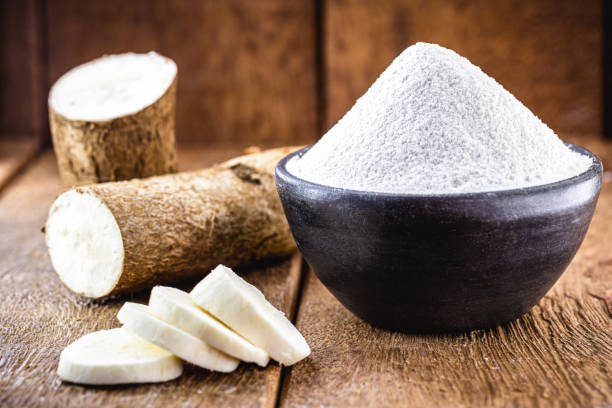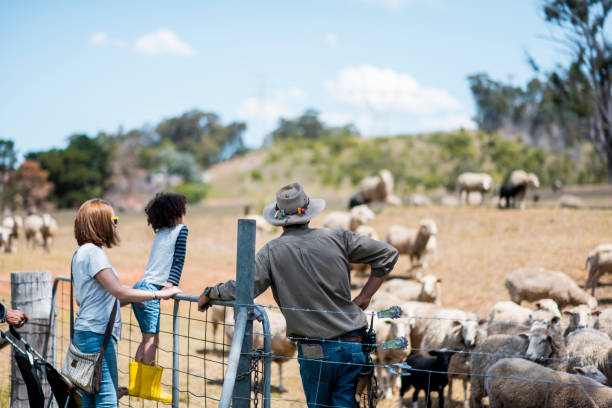Cassava is a multifaceted root crop and has become a vital part of the global agricultural domain. Cassava is known for its resilience and adaptability, having gained recognition not only as a staple crop but also as a lucrative business opportunity. This blogpost is targeted to help you explore the diverse ways entrepreneurs can turn cassava production and export into a million-dollar venture.
With the rapid increase in population size and an evolving dietary preference, cassava has become a ready stable food option for billions of people worldwide. Beyond its nutritional value, cassava holds economic promise, particularly in the context of international trade. Exploring the avenues of cassava production and export not only contributes to food security but also opens doors to wealth creation on a substantial scale.
This broad view guide seeks to empower individuals interested in venturing into the world of cassava production and export. From the fundamentals of cultivating this hardy crop to navigating the intricacies of the global market, the blogpost will provide valuable insights and actionable steps for aspiring entrepreneurs. So, let’s embark on this journey of turning cassava into not just a crop but a pathway to financial success.
Understanding Cassava
A. Overview of Cassava as a Crop
Cassava, scientifically known as Manihot esculenta, belongs to the spurge family and is prized for its starchy tuberous roots. Originating from South America, cassava has spread globally, adapting to various climates and soil conditions. Its ability to thrive in diverse environments makes it a resilient and preferred crop for cultivation.
B. Varieties of Cassava and Their Characteristics
Diversity characterizes cassava varieties, each with unique attributes suited for specific purposes. Some varieties excel in starch production, while others are recognized for their culinary qualities. Understanding these distinctions is crucial for farmers aiming to meet specific market demands and optimize their cassava production for profitability.
C. Global Demand and Market Trends
The global demand for cassava has witnessed a significant uptick in recent years. With applications ranging from food and animal feed to industrial uses like biofuel production, the market for cassava products continues to expand. Examining current trends in consumer preferences and industry demands is essential for entrepreneurs looking to tap into this flourishing market.
Getting Started in Cassava Production
A. Land Preparation and Soil Requirements
The foundation of a successful cassava venture begins with proper land preparation. Cassava thrives in well-drained soil with a pH ranging from 5.5 to 6.5. Adequate soil fertility and appropriate drainage systems are key factors that can significantly impact crop yield. This section will delve into the intricacies of preparing the land to create an optimal environment for cassava cultivation.
B. Selecting the Right Cassava Variety
Choosing the appropriate cassava variety is akin to laying the groundwork for success. Factors such as local climate, soil type, and end-use purposes should guide this decision. Entrepreneurs will benefit from a detailed exploration of various cassava varieties, understanding their growth characteristics and suitability for different market demands.
C. Planting and Cultivation Techniques
Once the groundwork is set, the next crucial step is mastering the planting and cultivation techniques. From spacing considerations to the depth of planting, this section will provide a step-by-step guide to ensure that cassava plants receive the care they need to thrive. Exploring innovative cultivation methods and embracing sustainable practices can further enhance productivity and reduce environmental impact.
Maximising Yield
A. Best Agricultural Practices for Cassava
Optimising cassava yield requires implementing best agricultural practices. This includes proper wedding, timely application of fertilisers, and efficient pest control measures. Examining the specific needs of cassava plants at different growth stages will guide farmers in creating an environment conducive to high yields.
B. Efficient Irrigation and Pest Control Strategies
Water management is critical in cassava cultivation, and understanding efficient irrigation practices ensures optimal growth. Additionally, implementing effective pest control strategies is essential for safeguarding the crop. Balancing the use of organic and chemical methods while considering environmental sustainability is a key aspect to be explored in this section.
C. Use of Fertilisers and Nutrients
Nutrient management plays a pivotal role in cassava production. This section will delve into the appropriate use of fertilisers, highlighting the essential nutrients for cassava plants. Understanding nutrient deficiencies and addressing them through strategic fertilisation practices contributes significantly to the overall health and yield of the cassava crop.
Harvesting and Processing

A. Optimal Harvesting Time
Timing is crucial in cassava harvesting, as it directly impacts both quality and yield. This section will guide farmers on identifying the optimal time for harvesting, considering factors such as plant maturity, weather conditions, and market demand. Ensuring the right timing contributes to the production of high-quality cassava.
B. Techniques for Harvesting Cassava
Effective harvesting techniques are essential to minimise post-harvest losses and ensure the preservation of cassava quality. From manual methods to mechanised approaches, this section will explore various techniques available to farmers. Understanding the pros and cons of each method empowers farmers to make informed decisions based on their specific circumstances.
C. Processing Methods for Different Cassava Products
Diversifying cassava products opens up avenues for increased revenue. This section will explore various processing methods, from traditional to modern, for creating products such as cassava flour, starch, and chips. Entrepreneurs will gain insights into value addition, product differentiation, and market opportunities by embracing innovative processing techniques.
Quality Control and Standards
A. Meeting International Quality Standards
Ensuring that cassava products meet international quality standards is paramount for success in the global market. This section will provide an in-depth exploration of the quality criteria set by regulatory bodies and market expectations. Implementing robust quality control measures is essential for building a positive reputation and gaining access to premium markets.
B. Importance of Quality Control in Cassava Production
Quality control isn’t just a requirement; it’s a fundamental aspect that influences the entire cassava production cycle. From planting to processing, maintaining quality standards safeguards the reputation of the brand and fosters consumer trust. This section will delve into the significance of quality control practices throughout the production chain.
C. Certifications and Regulatory Compliance
Navigating the complex landscape of certifications and regulations is vital for cassava producers and exporters. Understanding the certification processes and ensuring compliance with international standards can open doors to premium markets and build credibility. This section will guide entrepreneurs on obtaining relevant certifications and staying abreast of regulatory changes in the industry.
Market Research and Analysis
A. Identifying Target Markets for Cassava Products
Successful cassava entrepreneurs strategically identify and target markets that align with their products. This section will guide readers through the process of market segmentation, understanding consumer preferences, and pinpointing regions with high demand for cassava-based products. Tailoring products to meet specific market needs is a key factor in building a profitable export business.
B. Analysing Competition in the Cassava Industry
A comprehensive understanding of the competitive landscape is crucial for sustainable growth. Entrepreneurs will benefit from an exploration of existing players in the cassava industry, their strengths and weaknesses, and potential market gaps. This analysis will inform strategic decisions and help carve out a unique selling proposition in a competitive market.
C. Understanding Export Regulations and Requirements
Navigating export regulations is essential for a successful international cassava business. This section will delve into the intricacies of export documentation, compliance with destination country regulations, and managing logistics. A clear understanding of trade policies and adherence to export requirements will facilitate a smooth and profitable export process.
Building a Successful Export Business
A. Creating a Business Plan
The foundation of any successful venture lies in a well-crafted business plan. This section will guide aspiring cassava entrepreneurs through the process of developing a comprehensive business plan, including market analysis, financial projections, and strategic goals. A robust plan not only serves as a roadmap but also attracts potential investors and partners.
B. Establishing a Supply Chain for Export
Efficient supply chain management is crucial for a seamless export operation. This section will explore the key components of a cassava supply chain, from farm to export. Topics will include logistics, storage, and transportation, emphasising the importance of reliability and consistency in meeting international market demands.
C. Marketing and Branding Strategies
Building a recognizable brand is imperative for success in the competitive export market. Entrepreneurs will gain insights into effective marketing strategies, including digital marketing, branding, and creating a compelling brand story. Establishing a strong brand identity not only attracts customers but also fosters loyalty and trust in the international market.
Financial Management
A. Budgeting for Cassava Production and Export
Financial success in cassava production and export begins with sound budgeting. This section will guide entrepreneurs through the process of creating a detailed budget that encompasses all aspects of the business, from cultivation costs to export logistics. Understanding and effectively managing financial resources is critical for sustainability and growth.
B. Securing Funding and Investment Opportunities
Entrepreneurs often require financial support to kickstart or expand their cassava ventures. This section will explore various funding options, including loans, grants, and investment opportunities. Guidance on crafting compelling proposals and engaging with potential investors will empower entrepreneurs to secure the necessary capital for their ventures.
C. Managing Cash Flow Effectively
Cash flow management is a key aspect of financial sustainability. This section will provide practical tips on monitoring cash flow, managing working capital, and navigating financial challenges. Effectively handling cash flow ensures that the business can operate smoothly, cover expenses, and capitalise on growth opportunities without encountering financial hurdles.
Conclusion
As we conclude this comprehensive guide to making millions from cassava production and export, let’s recap the key points discussed. From understanding the intricacies of cassava cultivation to navigating international markets, entrepreneurs have been equipped with the knowledge needed to embark on a successful journey in the cassava industry.
The potential for success in cassava production and export is vast, and this blogpost aims to inspire and encourage entrepreneurship. By harnessing the versatility of cassava and implementing the strategies outlined, individuals can not only contribute to the global cassava market but also build thriving businesses that make a positive impact on local economies.
Now armed with insights, case studies, and practical advice, it’s time for aspiring cassava entrepreneurs to take action. Whether starting from scratch or refining existing practices, the journey to making millions from cassava begins with passion, dedication, and a strategic approach. Seize the opportunities, learn from experiences, and cultivate success in the flourishing world of cassava production and export.












